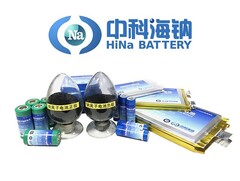
The first factory for sodium-ion batteries has started production with an initial 1 GWh capacity that is scheduled to increase from 3 GWh to 5 GWh in 2023. The price of lithium has shot up seven times in the past two years, making batteries with more affordable raw materials a viable alternative.
The world’s first mass production of sodium-ion batteries, developed by HiNa Battery, has reportedly begun with an initial 1 GWh capacity, scheduled to reach 3-5 GWh next year. The most obvious advantage of sodium-ion batteries is that they don’t use expensive lithium whose price has shot up 700% in the past two years or so, making electric vehicles and storage systems way more expensive to produce, with the increase in costs passed on to consumers.
The sodium-ion battery factory has been completed over the summer by Hina Battery, in partnership with the state-owned power company China Three Gorges Corporation (CTG). Two of the CTG affiliates, together with the government of Fuyang city where the factory is built, have fronted some of the funds and incentives for the sodium-ion battery research and production.
HiNa’s Na-ion cells have 145 Wh/kg energy density and are good for 4,500 full charge-discharge cycles, and the company’s research is now geared towards developing the second generation which should deliver up to 200 Wh/kg energy density and double its charge cycles. Energy density is one of the disadvantages of Na-ion batteries as sodium is quite a bit heavier than lithium, so they can’t really achieve the one of Li-ion cells.
CATL is also on the cusp of mass sodium-ion battery production, albeit with 160 Wh/kg energy density, and has also hinted that its next generation Na-ion cells will surpass the 200 Wh/kg threshold. Considering that Tesla’s much touted affordable 4680 battery that now goes in the Model Y returned just 244 Wh/kg energy density in recent tests, the sodium-ion cells are not to be underestimated, considering the affordability of their raw materials.
Daniel Zlatev – Tech Writer – 496 articles published on Notebookcheck since 2021
Wooed by tech since the industrial espionage of Apple computers and the times of pixelized Nintendos, Daniel went and opened a gaming club when personal computers and consoles were still an expensive rarity. Nowadays, fascination is not with specs and speed but rather the lifestyle that computers in our pocket, house, and car have shoehorned us in, from the infinite scroll and the privacy hazards to authenticating every bit and move of our existence.
Daniel Zlatev, 2022-12- 4 (Update: 2022-12- 4)


